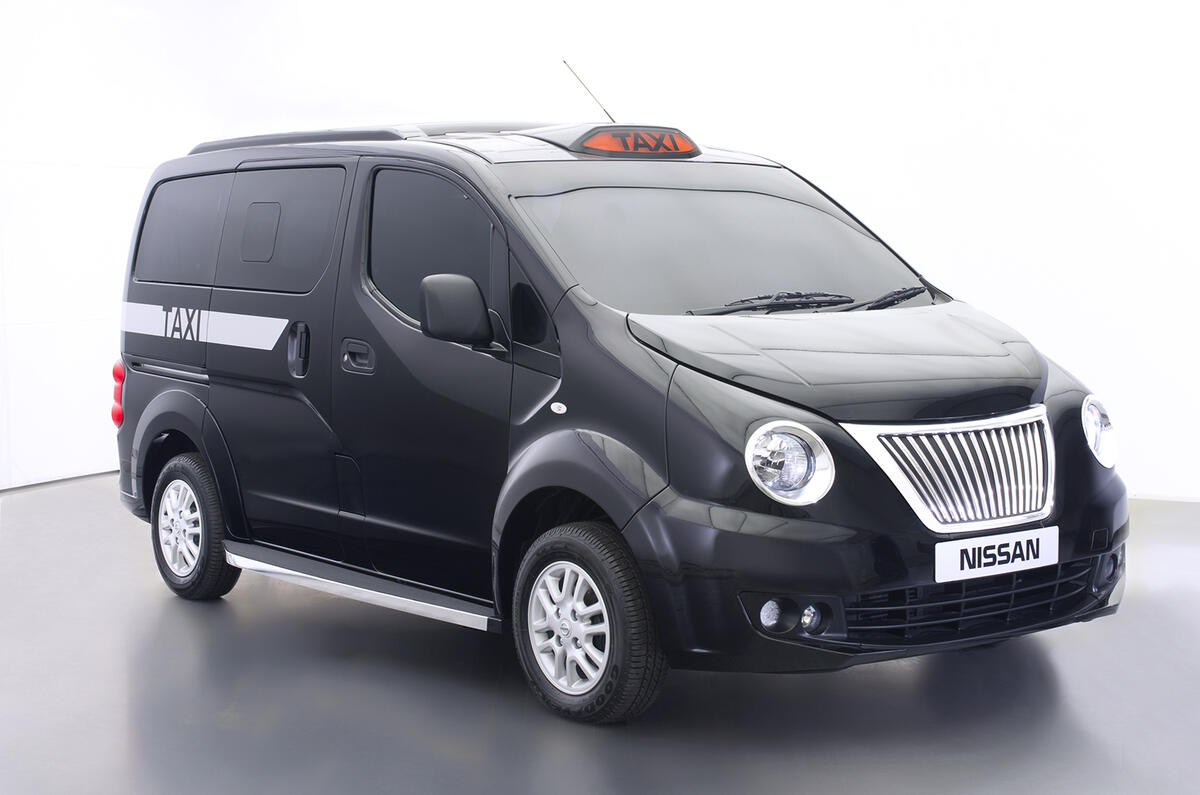I find the fascination the world’s biggest car makers have with the London black cab market a complete mystery. With around 22,000 long-lived cabs on the capital’s roads, annual sales add up to perhaps as few as 1200 units per year.
Not only is it a very, very, small market niche, it is also one of the most complex markets to enter. Most people know about the 25ft turning circle requirement, which something that the traditional London TX4 cab manages by being rear-wheel drive and using double wishbone front suspension that’s rumoured to have its engineering roots in ancient Triumph technology.
But London cabs also have to swallow a wheelchair whole, something demanded by very few, if any, other global taxi car regulations.
VW showed a concept London black cab a few years ago, based on a very stretched version of the VW Volkswagen Up platform, but there was no suggestion on how it might have passed the turning circle requirement.
This (also) unique legislation has made it nearly impossible for any other car maker to build a rival vehicle to the TX4. However, Mercedes decided to make a serious pitch for the black cab market a few years ago by using an outside company to engineer rear-wheel steering for the big Vito MPV.
Although Merc did initially take a good chunk of the black cab market, it has been hit by significant problems with the rear-wheel steering technology that, according to internet forum chat, is being undermined by water ingress into the actuation components. MB UK is on the case, but it’s another blow for introducing new technology into the black cab market.
Cabbies are owner-drivers and don’t care for anything too new-fangled or hard or expensive to fix and the TX cabs have, generally, had robustness on their side.
But there’s no doubt that it’s time for a new solution. As the heavy (more or less two tonne) TX4s age, they can be responsible for significant amounts of air pollution. One estimate is that the current black cab fleet is responsible for 25 per cent of the particulates released in the air of central London.
Cabbies also bemoan the significant running costs (the day-to-day mpg is hopeless), recent engineering problems, myriad annoyances and a lack of comfort.
Which is where the Nissan black cab comes in. It’s based on a mass-production van, so all the essentials such as heating and ventilation and seating comfort have been nailed down. The new steering system is reassuringly mechanical (and has been rigorously tested at the Millbrook proving ground) and the engine is a good old, clean-burning, non-turbo petrol engine driving a proven CVT gearbox. Even the sliding doors are manual because Cabbies found that the electric doors on the Mercedes were a tiny bit slow to close, which prevent an immediate pull off from the kerbside.
With input from Transport for London, Nissan design studios have also added a new ‘face’ (although the jury has to be out on the Chinese levels of chrome on the grille) that gives this van a touch more character.




Join the debate
Add your comment
Horrendous.
Give me a comfortable Vito taxi anyday. And whats that about the doors being slow to close? You can drive off as they close ...
Hideous design that beggars
Many years ago.....
Within 3 weeks of it being opened for use, Railtrack were sending Emails and faxes saying the road markings had worn away. 10 seconds with a bit of cloth and white spirit saw a small section revealed.
As only London hackney cabs were allowed down this road, I leave it to you to work out where this s*** came from.